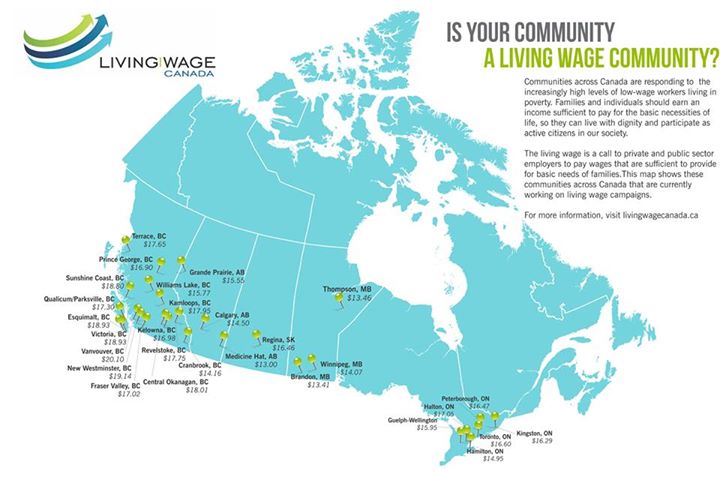For many Canadians, minimum wage laws represent an unsustainable way of life. Insufficient wages are one of the very root causes of poverty in Canada, alongside unaffordable housing and unemployment. The below infographic, published by Living Wage Canada, highlights communities across Canada working on living wage campaigns. Numbers on the map represent proposed living wages. The term “living wage” refers to wages that are high enough to maintain a normal standard of living.
There’s a tendency to attribute poverty to unemployment, unemployment caused by an unwillingness to work. This couldn’t be further from the truth. 44% of poor households in Canada had one individual working regularly. Such blind attributions are not rooted in reality, instead they’re rooted in prejudicial thinking. Rather than misattributing poverty to apparent laziness, it would be better if we looked at how employment in Canada has changed over the last few decades.
In recent decades, employment in Canada has become increasingly precarious. Contributors to the current state that workers find themselves in include a decrease in well-paid jobs and a drop in wages. In 2011, CCPA reported that “Canadian families in the bottom half of the population work more than families in the 1970’s, yet they have experienced a 24% drop in total earnings.” While the cost of living has clearly increased over time, it has actually been accompanied by a drop in wages for many families. Low wages make it increasingly difficult for individuals to have a nutritious food supply, take care of their children and access healthcare services not covered by government programs.
The Canadian economy has also seen a steady rise in part-time employment. Incentives for employers to hire part-time workers include saving on benefits plans and increased flexibility on their end. However, workers share none of these benefits. Instead, they work odd hours, hold multiple jobs, and face increased stress. Keep in mind that these workers are not only single men and women living in urban areas. They are single moms and dads across Canada looking to provide for their kids. They represent young adults trying to establish stability through uncertainty. They represent newly immigrated families trying to make ends meet in a new country.
Housing is directly linked to issues concerning living wages. For example, in the GTA and Metro Vancouver, housing costs have sharply increased in recent decades. Rising rental costs are not only limited to urban centres, rural areas have also seen significant increases. Research shows that a lack of affordable housing pushes individuals into homelessness. A move toward living wages, alongside an increase to affordable housing stock, would be a significant step toward adequately addressing and preventing homelessness.
It’s true that living in Canada is currently unaffordable for many. However, I fail to see why the status quo shouldn’t change. By advocating and supporting research informed recommendations to address issues of homelessness and poverty, we can ease the stress for fellow Canadians across the board and move our country forward. November 2nd to the 8th is Living Wage Week in Canada and it’s the perfect time to explore the issues of poverty, employment and housing.


